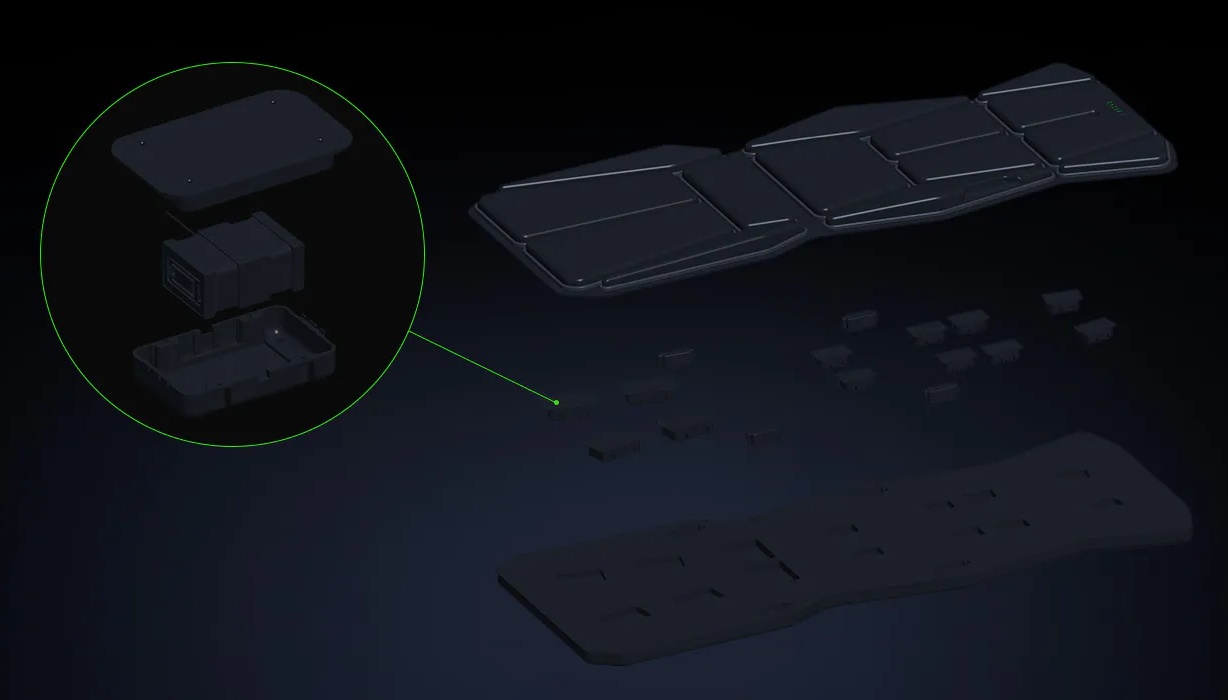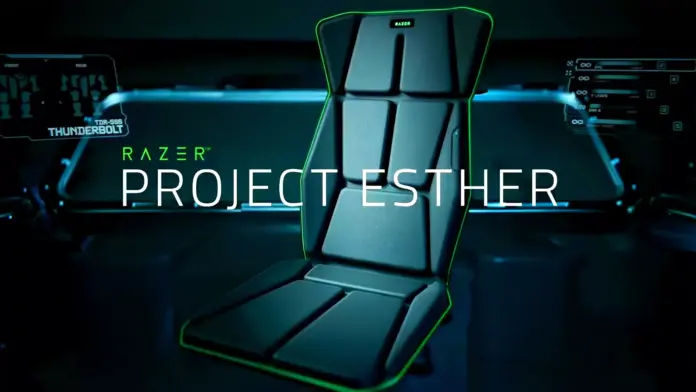Real haptic feedback, not just on your fingers. I’ve been waiting for this since I was little. Razer may soon have an (affordable) solution
The Consumer Electronics Show 2024 (CES) is drawing to a close and there was all kinds of news from various sectors of the tech industry. Razer also took the opportunity to announce a special kind of device – and I’m a fan
We’re talking about the first seat cushion with haptic feedback
Project Esther: Immersion through vibration
Razer likes to present very “special” projects that may seem a little strange at first or second glance. For example, the RGB respirator Razer Zephyr or the razor Razer Razer, which was originally just an April Fool’s joke and was then turned into reality.
Now there’s another project that we can’t be sure will actually come to market.
What exactly is Project Esther? It’s a cushion that you can sit on and that converts signals from games into haptic feedback. For example, you can feel footsteps, gunshots or explosions in the game
The cushion is stretched on a chair and then rests against your bottom and back.
How does it work? According to the Razer render trailer, which you can see below, the cushion uses “Wideband, High-Definition Haptics”. Accordingly, the vibrations emanating from the cushion should feel particularly realistic, similar to the DualSense controller on the PS5, for example.
Apropos: The DualSense could soon get a new version. You can find out more about the leak here:
Sony leak: New DualSense should iron out the biggest weakness of the PS5 controller

In addition, the cushion is said to have “True-Positional Haptics”, which let you feel where an opponent is moving around you in the game, for example.
Razer has installed 16 actuators that convert electrical signals into mechanical movements – the cushion therefore not “only” has vibrations, but can also emit individual targeted pressure impulses that should give you the feeling of recoil.
The accompanying software supposedly allows you to make precise settings and program in individual effects.
The cushion is also designed to fit most gaming and office chairs and is strapped in place with a strap.
My trade fair highlight
What I like so much about it: I have always been fascinated by virtual worlds and always wanted to immerse myself in them. This is now relatively easy to do with VR, but there’s still room for improvement! After all, VR only serves one purpose: seeing.
I’m not satisfied until I can feel what’s going on in the game on at least most of my body.
Admit it: The pillow doesn’t let me feel anything all over my body either, but it’s a start. Especially one that at least looks relatively affordable, even if Razer hasn’t announced a market price.
It shouldn’t be too expensive, though, as there are already alternatives available on the market.
Alternatives to Project Esther: For example, there is the bHaptics TactSuits, which costs between 400 and 600 euros and provides the entire upper body with haptic signals instead of just the back. Treadmills in which you can stretch yourself are slightly different, but based on a similar idea. These cost several thousand euros, such as the KAT Walk C2, or the Virtuix Omni System
All these alternatives are expensive and require more effort. On the other hand, you would set up the cushion once with the Razer software and then place it on your chair. This would probably happen in passing and you could leave the cushion on your chair even when you’re not using it.
This is just a guess, however, as I have not yet been able to try out Project Esther myself.
Are there any disadvantages? An editor from The Verge has already been able to try out Razer’s gaming cushion and was relatively enthusiastic. He describes it as an “epic feeling” when he goes into battle with a robot from MechWarrior 5 . However, he also complains that it sometimes feels strange because the feedback is only on the butt and lower back
When can I get started? Unfortunately, Razer has not yet announced when and if Project Esther will even be released on the market for end customers. We’ll probably have to be patient
However, I personally hope that Razer will continue to work on the principle and launch an affordable product in the next few months (or years). How would you like to see haptic feedback on the body become more widespread? Would you put Project Esther on your chair? How much would you pay? What other ways can you think of to increase immersion in your favorite game? In other words: When will scent-o-vision finally catch on? Let us know your opinion and predictions in the comments below:


